Whether you're a sourdough baking enthusiast looking for what to do with leftover sourdough bread or simply craving an easy bread dessert with more character than its traditional counterparts, this egg free Sourdough Bread Pudding recipe promises a sophisticated twist on nostalgia that will have everyone asking for more.
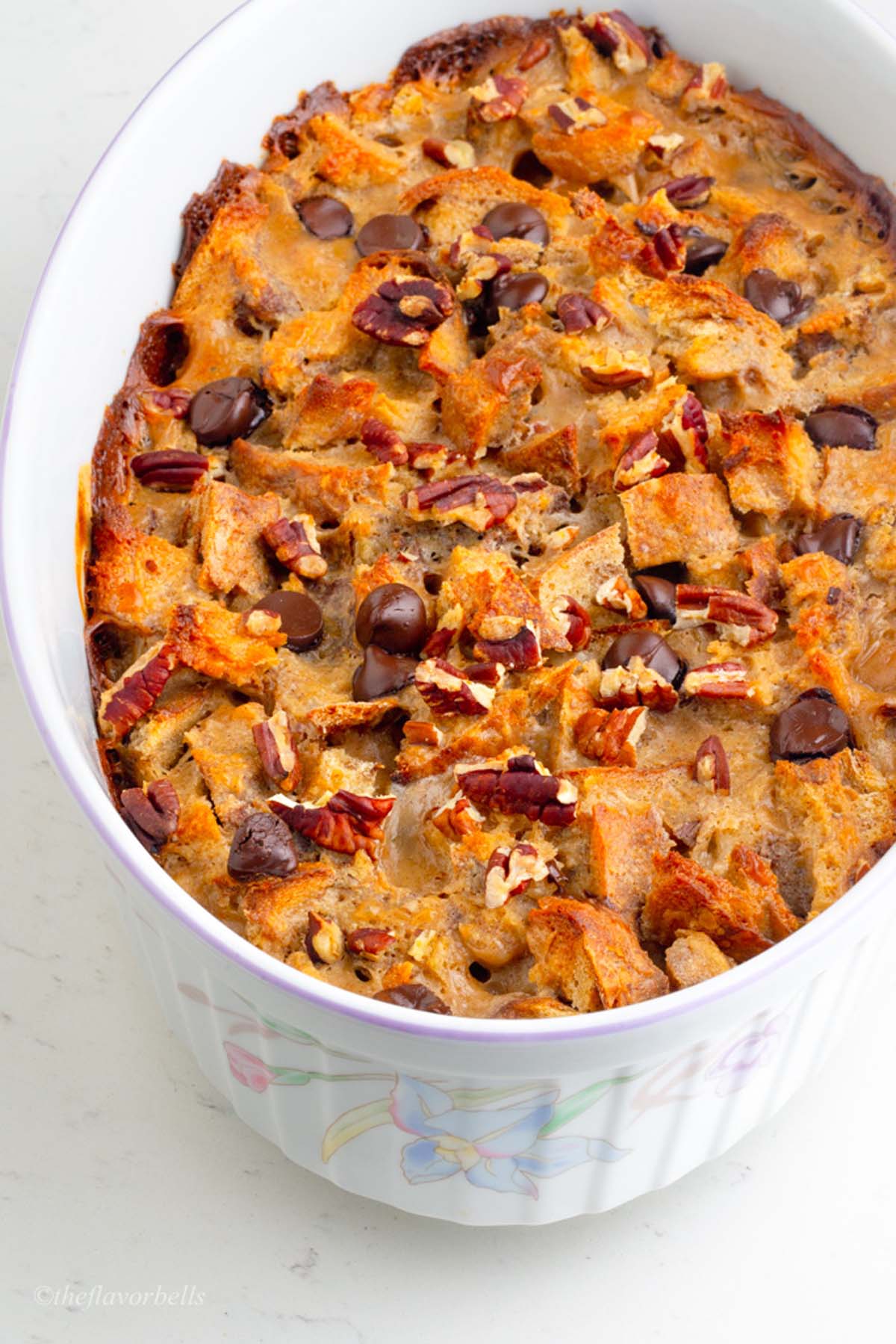
As the morning fog gently rolled over my front yard, I found myself peering into the bread box at the stale crusty sourdough loaf—too stale for sandwiches yet too precious to waste—when inspiration struck: transform this tangy artisan bread into a luxurious bread pudding that celebrates the distinctive sourdough flavor rather than disguising it. The subtle fermented notes of homemade sourdough bread create magical pockets of tang that perfectly balance the sweet egg-free custard base, elevating this classic comfort dessert into something worthy of both a casual brunch gathering and an elegant dinner finale.
Jump to:
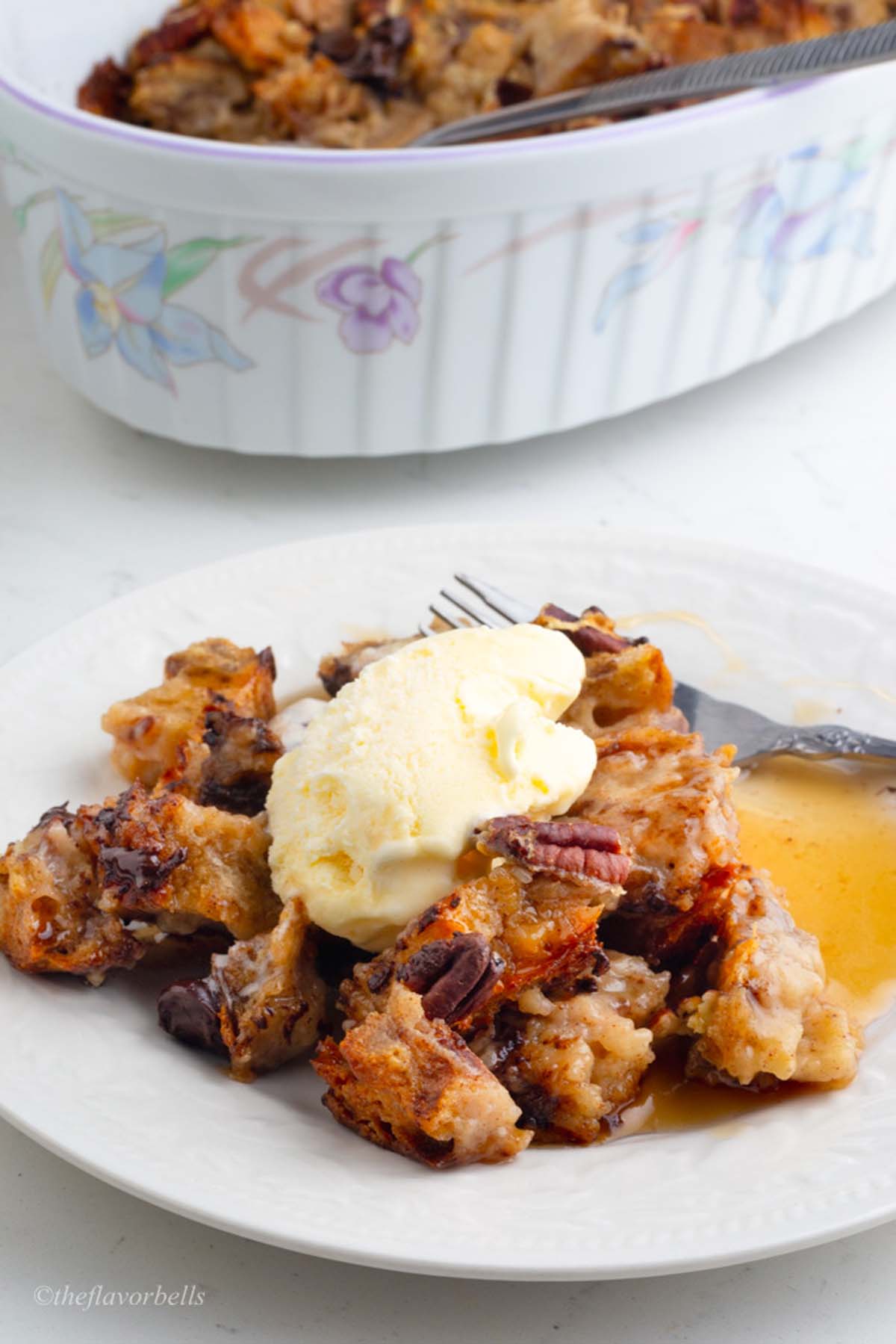
👩🏽🍳 Why Should You Try This Recipe?
- Egg-Free Innovation: Enjoy all the custardy richness of traditional bread pudding without eggs, making this dessert perfect for those with allergies or following vegetarian diets. The egg-free custard becomes caramelized on baking and gives a delightful depth to the flavor of the bread pudding.
- Sourdough Distinction: The natural tanginess of sourdough bread creates the perfect flavor counterbalance to the sweet custard, elevating this comfort food classic.
- Waste-Reducing Wonder: If you are thinking about how to use stale sourdough bread? This recipe is the perfect answer. Transform day-old artisanal sourdough bread into an entirely new, crave-worthy dessert instead of letting it go to waste.
- Surprisingly Creamy: The cornstarch-thickened custard delivers that perfect pudding texture that many assume only eggs can provide.
- Dietary-Friendly Dessert: Easily adaptable for dairy-free needs while already accommodating egg restrictions—without sacrificing that classic comfort food experience.
- Versatile Treat: This repurposed sourdough bread pudding recipe works beautifully for breakfast, brunch, or dessert, making it a go-to recipe for multiple occasions throughout the year.
🧂 Ingredient Notes & Substitutions
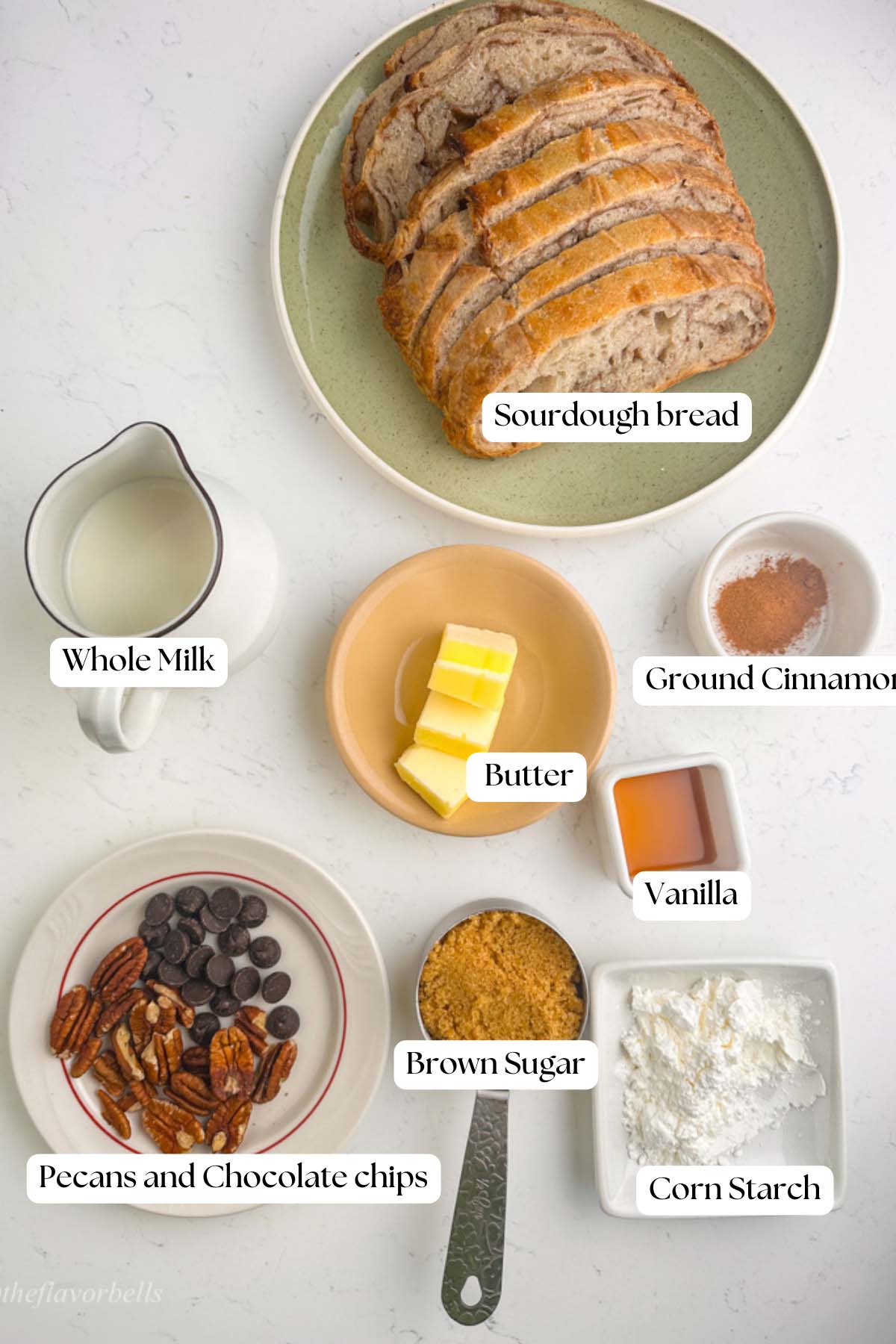
Let’s discuss briefly what ingredients do we need for making your bread pudding with sourdough bread.
1. Sourdough Bread:
Day-old or slightly stale sourdough bread or sourdough discard bread works best as it absorbs the custard mixture more effectively. If you don't have leftover sourdough bread on hand, sourdough brioche or challah make excellent substitutes, though they'll produce a less tangy final product. Home-baked artisanal sourdough with its irregular air pockets creates the most interesting texture. You can use any yeast stale bread also.
2. Whole Milk:
This provides richness to your bread pudding, but you can easily swap in plant-based alternatives like oat milk or almond milk for a dairy-free version. For an extra indulgent treat, replace up to half the milk with heavy cream or half-and-half.
3. Corn Starch:
This helps thicken the custard base. If unavailable, substitute with all-purpose flour or arrowroot powder in equal amounts. For a gluten-free sourdough bread pudding, ensure your cornstarch is certified gluten-free.
4. Brown Sugar:
Light or dark brown sugar both work wonderfully, with dark brown providing a deeper molasses flavor. Coconut sugar or maple syrup make great refined sugar-free alternatives for health-conscious sourdough pudding lovers.
5. Flavoring
Cinnamon: Freshly ground cinnamon offers the most vibrant flavor for your homemade bread pudding. Alternatively, try cardamom, nutmeg, or pumpkin pie spice for seasonal variations.
Vanilla: Pure vanilla extract yields the best flavor, but vanilla bean paste creates stunning visual appeal with those tiny specks throughout the custard. In a pinch, almond extract provides an interesting twist at half the amount.
6. Butter:
Unsalted butter gives you better control over the final taste. For dairy-free versions, coconut oil or a quality plant-based butter substitute works well in this rustic dessert recipe.
7. Toppings:
- Fresh Fruits: You can make sourdough bread pudding with apples or strawberries or cherries. Also, dry fruits like dry figs or dry mangoes can be used to top.
- Chocolate Chips: Semi-sweet provides the perfect balance, but dark, milk, or white chocolate chips can be used based on preference. For an elevated sourdough bread pudding experience, try chopped artisanal chocolate or cacao nibs.
- Pecans: Toast them lightly before adding them for enhanced flavor. Walnuts, almonds, or hazelnuts make excellent substitutions for this classic comfort food recipe, or omit entirely for nut-free households.
🔪Instructions
1. Preparing the Bread
Start by preheating your oven to 350°F (175°C) while you gather your ingredients. Take your sourdough bread and cut it into roughly 1-inch cubes - don't worry about being too precise, as the rustic, irregular shapes add character to your pudding. If your bread is fresh rather than day-old, you can toast the cubes lightly in the oven for about 10 minutes until they're just dried out but not browned. This extra step helps the bread better absorb all that delicious custard we're about to make. Transfer your cubed bread to a lightly greased 8x8 inch baking dish or a casserole, arranging them in an even layer.
2. Making the Custard
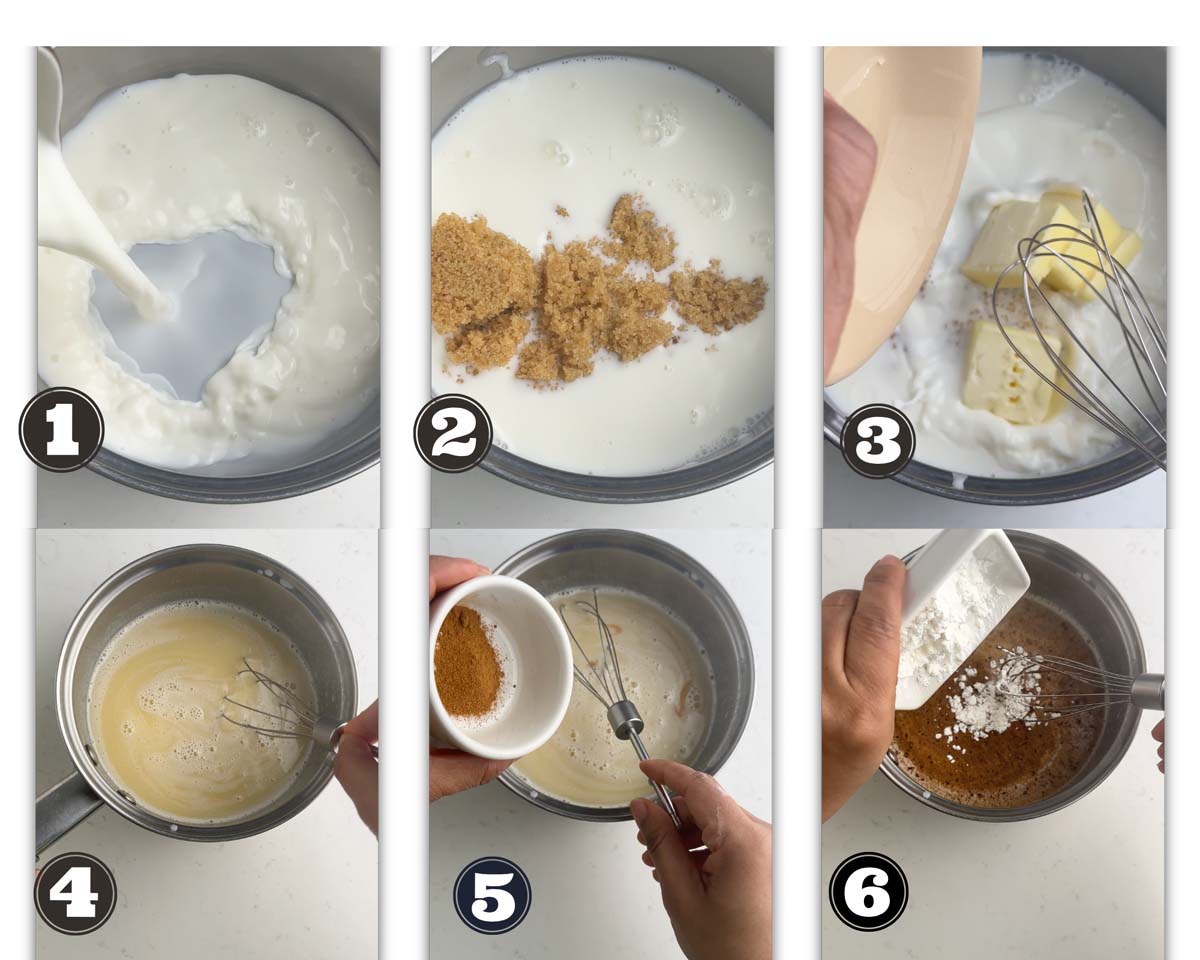
In a medium saucepan, add milk, brown sugar and melted butter. Place it over medium heat until it's hot but not boiling. The sugar should dissolve, and the butter should melt. In a separate large mixing bowl, whisk together the cornstarch and ground cinnamon until well combined with no lumps. Slowly pour about a quarter of the warm milk into the cornstarch mixture, whisking continuously to prevent clumping. This creates a slurry that will thicken beautifully. Now pour this mixture back into the remaining warm milk in the saucepan, stirring constantly.
You can add everything directly into the saucepan, but in that case, you will have to ensure that the mixture is not hot, just warm, else the cornstarch will form lumps in the milk.
Continue cooking over medium-low heat for about 3-4 minutes until the mixture starts to thicken slightly. Remove from heat and stir in the vanilla extract. Your egg-free custard base is now ready!
3. Assembling
Pour your warm custard mixture evenly over the bread cubes, gently pressing down with a spatula to ensure all pieces get soaked. Let the mixture sit for 10-12 minutes, allowing the sourdough to absorb the sweet custard. This resting period is crucial for that perfect sourdough bread pudding texture! After resting, sprinkle the chocolate chips and chopped pecans evenly across the top, letting some sink slightly into the mixture.
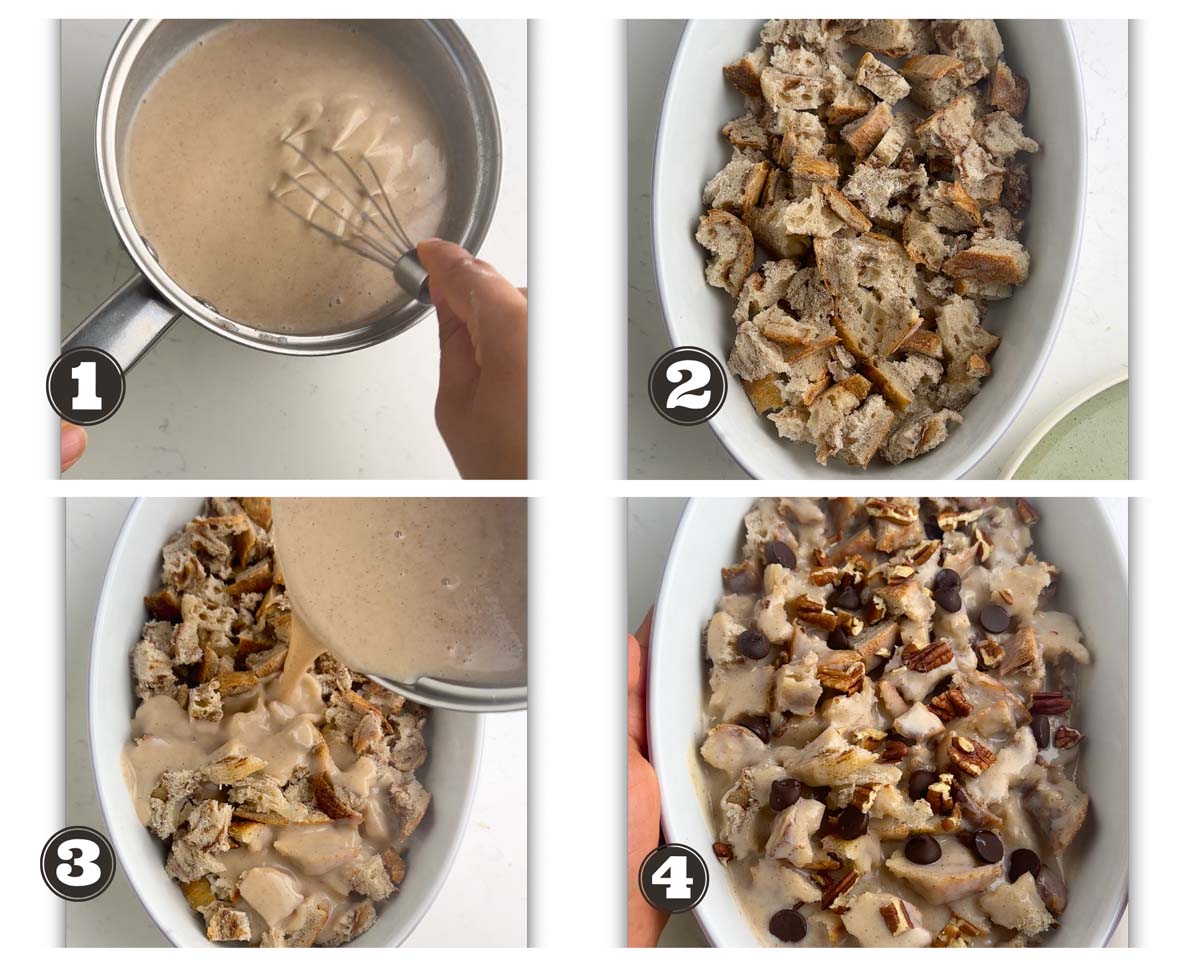
4. Baking
Place the baking dish in your preheated oven and bake for 35-40 minutes until the top is golden brown and the center is set but still slightly jiggly. The pudding will continue to firm up as it cools.
5. Serving
Allow your homemade sourdough bread pudding to cool for at least 15 minutes before serving to let the custard set properly. This egg-free sourdough bread pudding can be enjoyed warm, at room temperature, or even chilled - each offering a different but equally delicious experience. Serve it as is or elevate it with a drizzle of maple syrup, a dollop of whipped cream, or a scoop of vanilla ice cream for an extra indulgent treat.
💭Recipe Notes & Tips
- Bread Selection & Preparation: The key to exceptional sourdough bread pudding lies in using bread that's 1-2 days old sourdough bread. If you only have fresh sourdough, cut it into cubes and dry in a 300°F oven for 10-15 minutes before using. The slightly dried bread absorbs the custard better without becoming soggy. For those who enjoy a more rustic presentation, tear the bread instead of cutting it - those irregular edges create wonderful texture variation in your homemade egg-free dessert.
- Custard Consistency: If your custard mixture seems too thick after adding the cornstarch, gradually thin it with a little more milk until it reaches a pourable consistency. When making egg-free sourdough bread pudding, the cornstarch needs proper heat activation to thicken correctly - ensure your milk is hot enough (but not boiling) when creating the slurry.
- Dietary Adaptations: This recipe easily transforms into a vegan sourdough bread pudding by replacing whole milk with full-fat coconut milk or oat milk, and using plant-based butter. The cornstarch already makes this an egg-free bread pudding recipe, which is perfect for those with egg allergies without sacrificing that classic custardy texture.
- Soaking Time Matters: For the best texture in your sourdough dessert, don't rush the soaking process. A minimum of 15 minutes is required, but extending to 30 minutes or even overnight in the refrigerator yields exceptional results. The longer soak allows the tangy sourdough to fully absorb the sweet custard.
- Fix For Dry Pudding: If your finished pudding seems dry, warm some additional milk or cream and pour it over the top before serving. For a make-ahead solution, prepare a simple vanilla sauce to pour over individual servings.
- Serving Temperature: While traditionally served warm, this sourdough bread pudding recipe tastes equally delicious at room temperature or chilled from the refrigerator. Each temperature brings out different flavor notes in the tangy sourdough base.
- Storage Solutions: Store leftover bread pudding in an airtight container in the refrigerator for up to 4 days. For the best reheating results with this egg-free version, add a splash of milk before warming in the microwave for 20-30 seconds or in a 325°F oven for about 10 minutes.
- Mix-in Variations: Beyond chocolate chips and pecans, try dried cranberries and white chocolate for a tart twist, or diced apples and walnuts for a fall-inspired version of this versatile sourdough dessert recipe.
- Texture Troubleshooting: If your pudding's top is browning too quickly while the center remains undercooked, loosely cover with aluminum foil for the remaining baking time. The perfect sourdough bread pudding should have a golden, slightly crisp top with a soft, custardy interior.
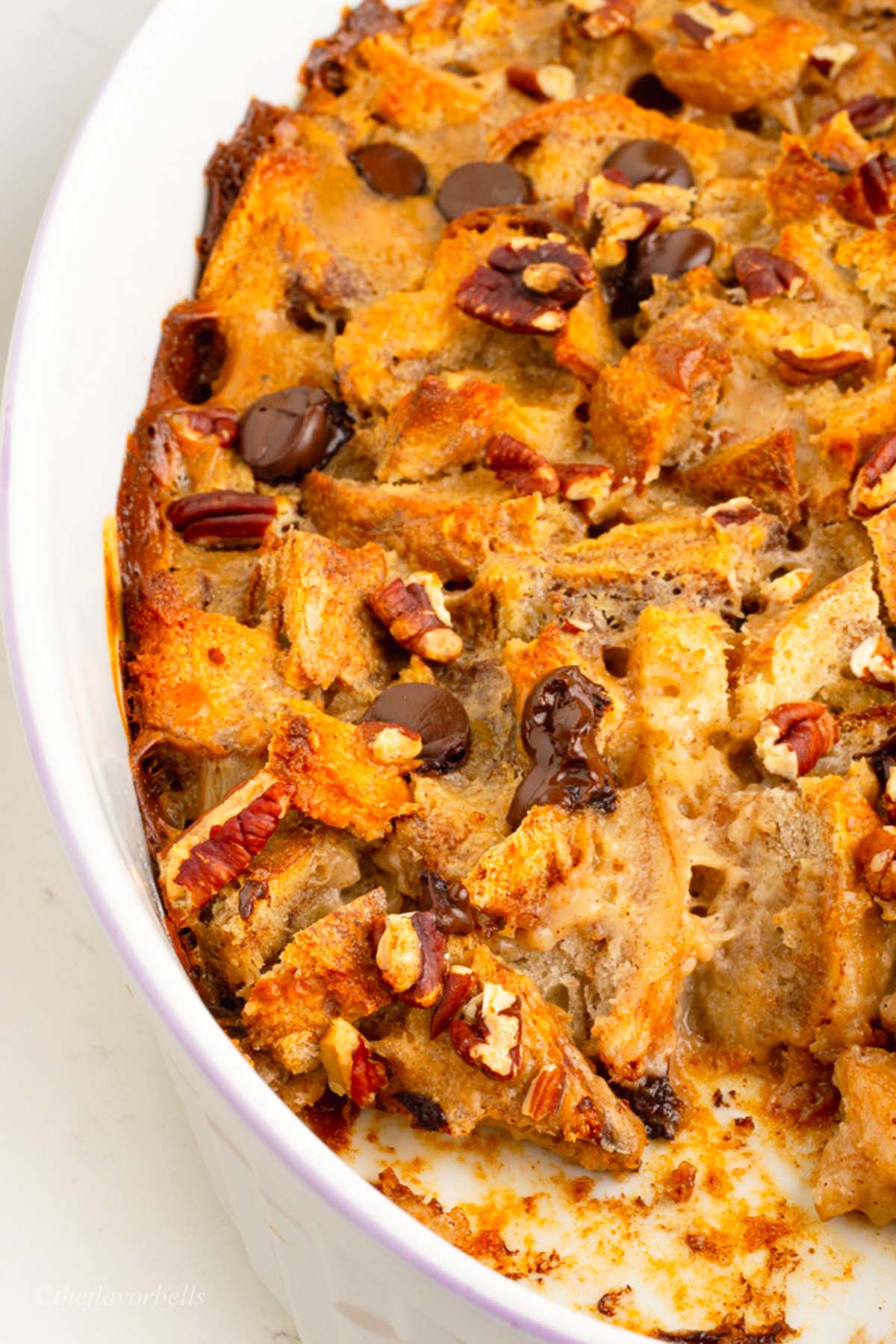
🫙Storage and Reheating Instructions
Once you've delighted in your first serving of this egg-free sourdough bread pudding (and somehow managed to have leftovers!), proper storage is key to maintaining its delicious flavor and texture for days to come.
Refrigerator Storage
After your bread pudding has cooled completely, cover the baking dish tightly with plastic wrap or aluminum foil. If you prefer, transfer individual portions to airtight containers – this makes grabbing a quick treat so much easier! Your sourdough bread pudding will remain deliciously fresh in the refrigerator for up to 5 days, though the texture is at its absolute best within the first 3 days.
I've noticed that the flavors actually deepen and meld overnight, making day-old sourdough bread pudding somehow even more delicious than fresh from the oven! This makes it a perfect make-ahead dessert for busy weekends or when you're expecting guests.
Freezer Storage
This egg-free version freezes beautifully! For best results, allow the bread pudding to cool completely before cutting into individual portions. Wrap each portion tightly in plastic wrap, then place in freezer-safe containers or heavy-duty freezer bags. Label with the date (trust me, you'll thank yourself later!) and freeze for up to 3 months.
When freezing a whole batch, I recommend lining your baking dish with parchment paper before assembling the pudding. Once baked and cooled, lift the entire pudding out using the parchment edges, wrap well, and freeze. This frees up your baking dish and makes reheating easier.
🔥 Reheating from Refrigerated
There are several ways to bring your chilled bread pudding back to its warm, comforting glory:
- Microwave Method: Place an individual portion on a microwave-safe plate and heat for 30-45 seconds. If it still isn't warmed through, continue heating in 15-second intervals. For an extra moisture boost, drizzle a tablespoon of milk over the top before heating.
- Oven Method: Preheat your oven to 325°F (165°C). Place the bread pudding in an oven-safe dish, cover with foil (this prevents further browning while reheating), and warm for 15-20 minutes until heated through. This method is perfect when reheating larger portions or the entire pudding.
- Air fryer: For a serving or two, this is my personal favorite method! A few minutes at 325°F gives you a slightly crisp exterior while keeping the inside tender and warm.
Reheating from Frozen
- Thaw First Method: Transfer from freezer to refrigerator and allow to thaw overnight. Then reheat using any of the refrigerated methods above.
- Direct from Frozen: For individual portions, reheat in the microwave for 1-2 minutes, then check and continue in 30-second intervals until warmed through. For larger portions, place the frozen pudding (unwrapped) in a covered oven-safe dish and bake at 325°F for about 30-35 minutes, or until the center registers 165°F on a food thermometer.
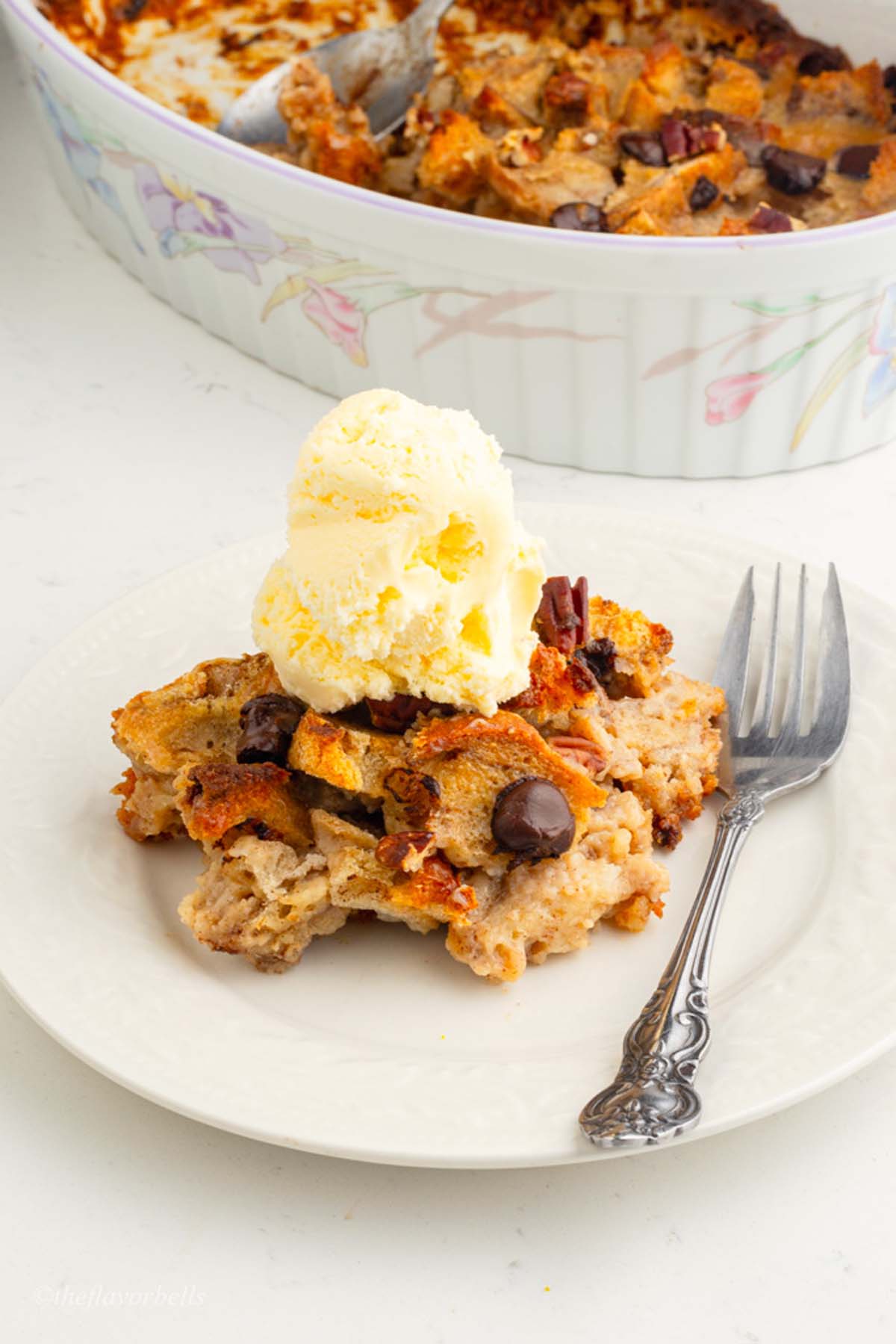
❓Frequently Asked Questions About Sourdough Bread Pudding
Sourdough bread is actually exceptional for bread pudding, offering distinct advantages over regular bread. The natural fermentation process creates a complex flavor profile with subtle tangy notes that add incredible depth to the final dessert.
The sturdy structure and chewy texture of leftover sourdough bread also help it maintain integrity even after soaking in custard, preventing the mushy outcome that can happen with softer breads.
Additionally, sourdough's irregular air pockets capture pockets of custard throughout the pudding, creating an interesting textural contrast in each bite. The crust of sourdough, typically more robust than that of regular white bread, adds wonderful chewy edges to your pudding.
From a nutritional perspective, the fermentation process in sourdough makes it easier to digest and can even make nutrients more bioavailable compared to regular bread. While traditional white bread certainly works for bread pudding, the distinct character of sourdough elevates this humble dessert to a more sophisticated culinary experience.
Absolutely! Sourdough bread pudding is an ideal make-ahead dessert that actually improves with a bit of resting time. You have several convenient options depending on your timeframe. For the best results, you can assemble the entire pudding up to the baking stage and refrigerate it overnight, which allows the bread to fully absorb the custard mixture, intensifying both flavor and texture. When ready to serve, simply bring it to room temperature for about 30 minutes before baking as directed. Alternatively, you can bake the pudding completely up to two days before your dinner party and store it covered in the refrigerator.
Can I freeze bread pudding? Yes, you can and when it's time to serve,bring it to room temperature and reheat the entire dish in a 325°F oven for about 15-20 minutes until warmed through, or serve it at room temperature which many people actually prefer.
For an extra special touch for your guests, consider preparing some fresh toppings like whipped cream or a simple caramel sauce separately. The egg-free version is particularly forgiving for make-ahead preparation since you don't have to worry about egg safety concerns during storage.
Many bread pudding enthusiasts insist that the flavor actually improves after a day in the refrigerator as the sourdough and custard flavors meld together beautifully.
Dry sourdough bread pudding typically stems from a few common issues that are easily remedied.
First, the bread-to-custard ratio might be off—sourdough's dense structure requires more liquid than regular bread. For proper absorption, ensure your custard mixture generously covers all bread pieces, with some excess liquid visible before baking. The resting period is also crucial; allow at least 20-30 minutes (or even overnight in the refrigerator) for the sourdough to fully absorb the custard before baking.
Overbaking is another culprit—bread pudding should be removed from the oven when the center is still slightly jiggly, as it continues cooking from residual heat. Your oven temperature might be too high; try reducing it by 25°F and extending baking time slightly for more even cooking.
For an egg-free version like ours, the cornstarch provides the binding, but it might need more liquid to compensate for egg's moisture.
If you're trying to salvage an already-baked dry pudding, warming individual servings with additional warm milk or cream poured over the top can work wonders, as can serving with a complementary liquid topping like a bourbon sauce, caramel drizzle, or fruit compote.
Remember that sourdough bread pudding improves with a brief rest after baking as the moisture redistributes throughout the dish.
🔗More Breakfast and Brunch recipe
- Oreo French Toast
- Brioche cinnamon Rolls
- Danish Sweet Buns
- Pumpkin Sourdough Pancakes
- English Muffins
- Sourdough French Toast
- 3-ingredient brunch bagels
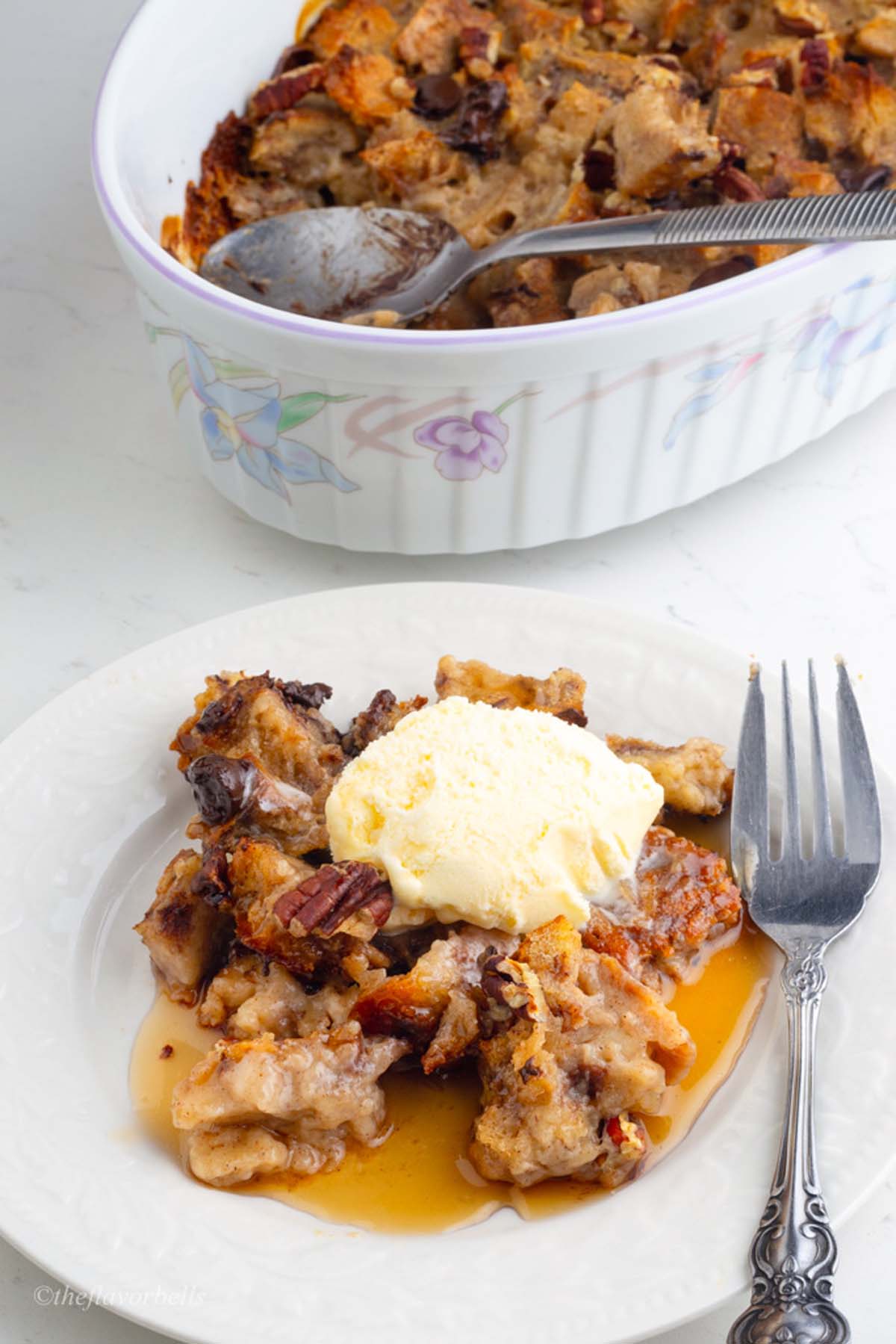
So, if you are wondering what to make with sourdough bread that is 2-3 days old? This egg-free sourdough chocolate chip bread pudding is your answer. This recipe transforms yesterday's artisan loaf into tomorrow's most requested comfort dessert, balancing rustic tanginess with creamy sweetness in every spoonful.
I'd love to see your creative spin on this versatile recipe—tag me in your sourdough creations or drop a comment below sharing your favorite add-ins!
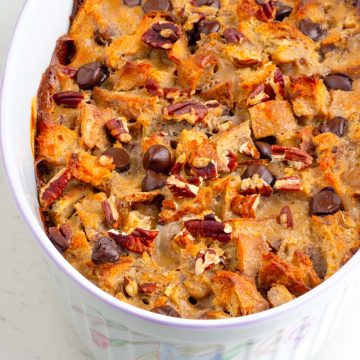
Sourdough Bread Pudding
Ingredients
- 6-7 slices of sourdough bread (1-3 days old)
- 1 ½ cup whole milk
- 1 tablespoon corn starch
- 1 teaspoon ground cinnamon
- ½ teaspoon vanilla
- ½ cup brown sugar
- 3 tablespoon butter
- ¼ cup chocolate chips
- ¼ cup Pecans
Instructions
Preparing the Bread
- Preheat oven to 350°F (175°C).
- Cut sourdough bread into 1-inch cubes (rustic shapes are fine).
- If using fresh bread, toast cubes for ~10 mins to dry them slightly (not browned).
- Transfer bread cubes to a greased 8x8-inch baking dish, arranging evenly.
Making the Custard
- In a saucepan, mix milk, brown sugar, and butter. Heat until warm (not boiling), ensuring sugar dissolves.
- In a separate bowl, whisk cornstarch and cinnamon until lump-free.
- Slowly add ¼ of the warm milk to the cornstarch mix, whisking to form a smooth slurry.
- Pour slurry back into the remaining warm milk, stirring constantly.
- Cook on medium-low heat for 3-4 mins until slightly thickened.
- Remove from heat, stir in vanilla extract.
Assembling
- Pour warm custard evenly over bread cubes, pressing gently to soak all pieces.
- Let sit for 10-12 mins for absorption.
- Sprinkle chocolate chips and chopped pecans on top (some will sink in).
Baking
- Bake for 35-40 mins until golden brown and set (center may still be slightly jiggly).
- Pudding will firm up while cooling.
Serving
- Cool for at least 15 mins before serving.
- Enjoy warm, at room temperature, or chilled.
- Optional toppings: maple syrup, whipped cream, or vanilla ice cream.
Notes
- For the best results, use sourdough bread that's 1-2 days old. If you only have fresh sourdough, cut it into cubes and dry them in a 300°F oven for 10-15 minutes before using. For a rustic texture, tear the bread by hand instead of cutting it neatly.
- If your custard mixture becomes too thick after adding cornstarch, gradually thin it with a little more milk until pourable. Since cornstarch requires heat to thicken properly, make sure your milk is hot (but not boiling) when mixing it into the slurry.
- This recipe can easily be made vegan by substituting whole milk with full-fat coconut or oat milk and using plant-based butter. The cornstarch base already makes it egg-free, making it a great option for those with egg allergies while still maintaining a custardy texture.
- For the best texture, let the bread soak in the custard for at least 15 minutes. Extending the soaking time to 30 minutes or even overnight in the fridge allows the sourdough to fully absorb the custard for a richer result.
- If your finished pudding seems dry, drizzle warm milk or cream over the top before serving. Alternatively, prepare a simple vanilla sauce to pour over individual portions for extra moisture.
- If the top browns too quickly while the center remains undercooked, loosely cover the dish with foil for the remaining baking time. The perfect bread pudding should have a crisp, golden top with a soft, custardy interior.
- While traditionally served warm, this bread pudding is equally delicious at room temperature or chilled. Each serving temperature brings out different flavor notes in the tangy sourdough.
- Store leftovers in an airtight container in the fridge for up to 4 days. To reheat, add a splash of milk and warm in the microwave for 20-30 seconds or in a 325°F oven for about 10 minutes.
📝Nutrition Facts
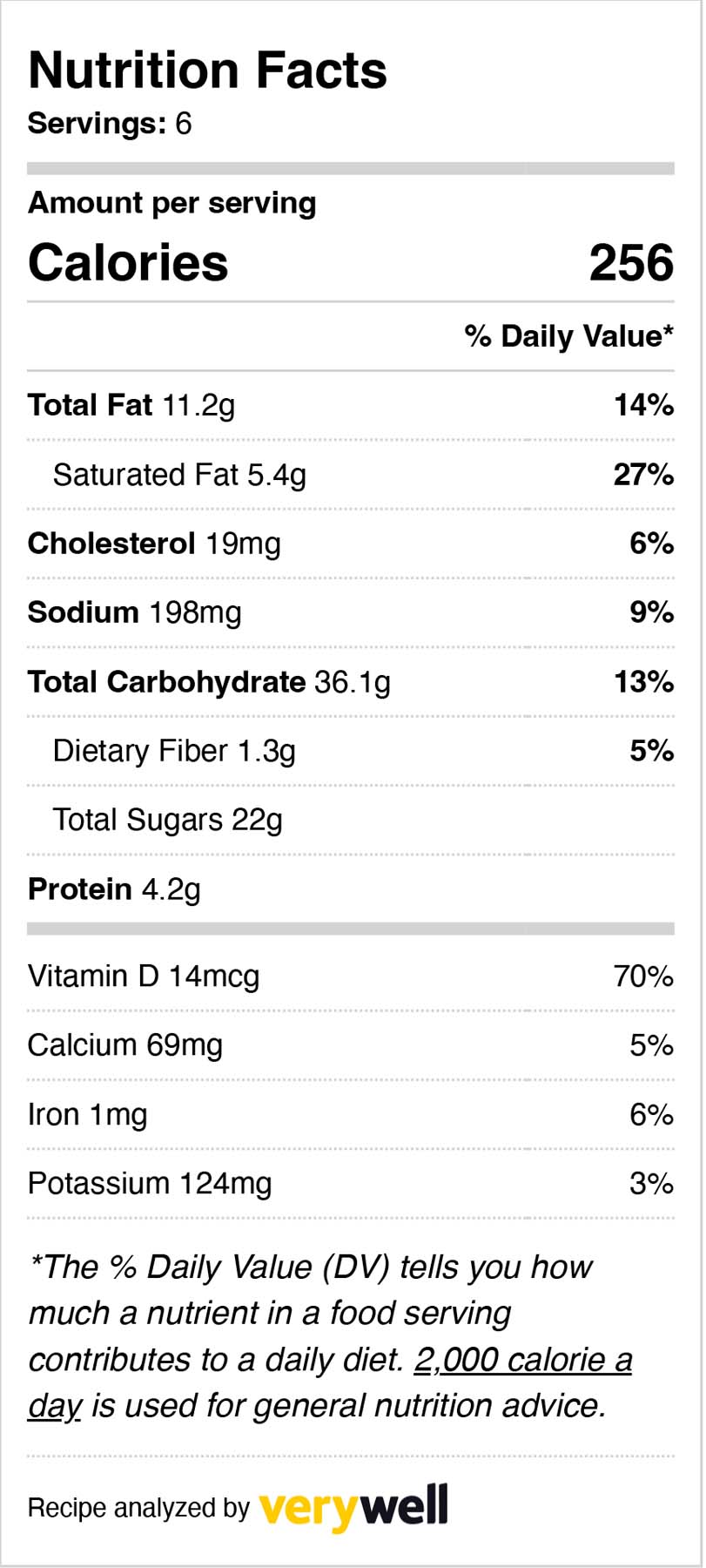


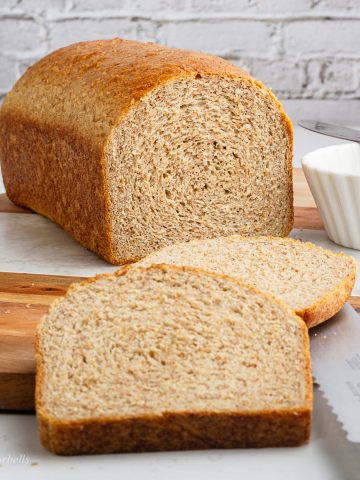
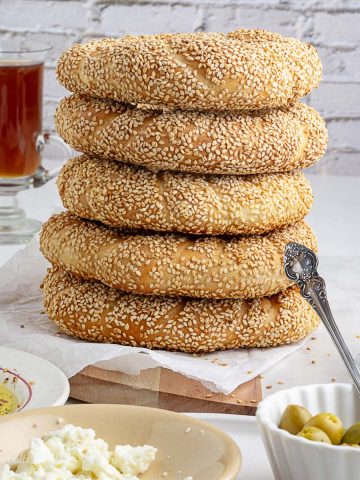
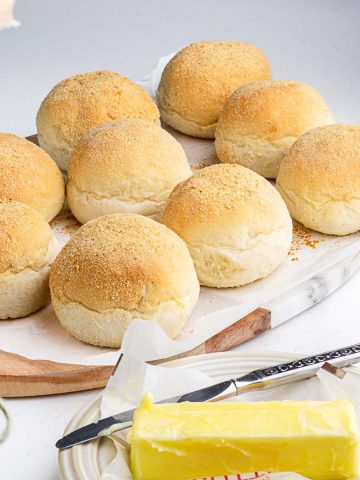

Leave a Reply